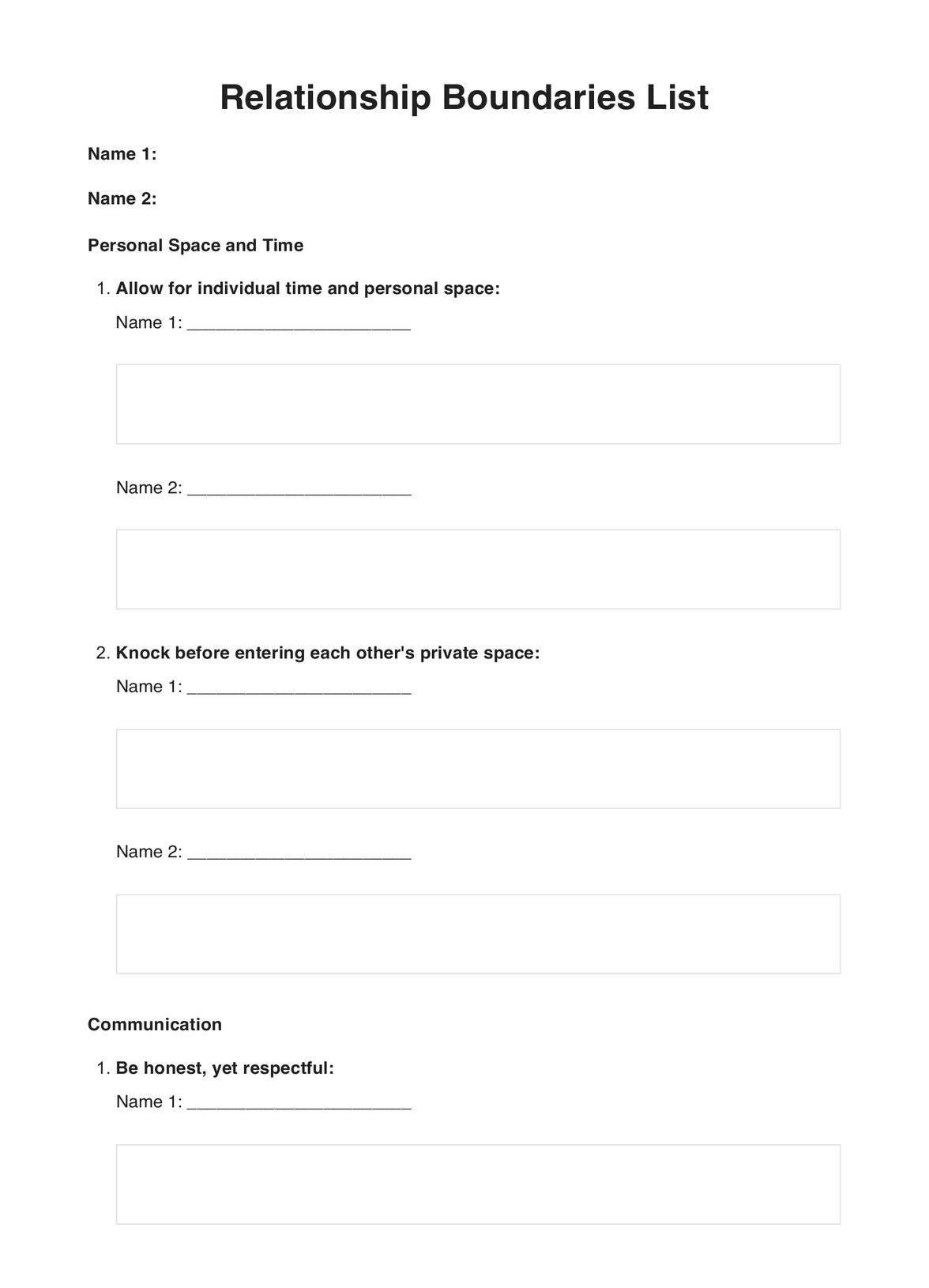Anyone who values their personal space, integrity, and mental health can use a Relationship Boundaries List.

Relationship Boundaries Lists
Create healthy boundaries with our Relationship Boundaries List. Easily create, manage, and share boundaries for healthier relationships and well-being.
Use Template
Relationship Boundaries Lists Template
Commonly asked questions
Relationship Boundaries Lists communicate one's needs and expectations within a relationship. They can facilitate assertive communication, career growth, clear communication, self-respect, self-care, and feeling respected.
It can help a person ensure their needs are respected, prevent feelings of resentment and violation, and foster healthier relationships.
EHR and practice management software
Get started for free
*No credit card required
Free
$0/usd
Unlimited clients
Telehealth
1GB of storage
Client portal text
Automated billing and online payments











